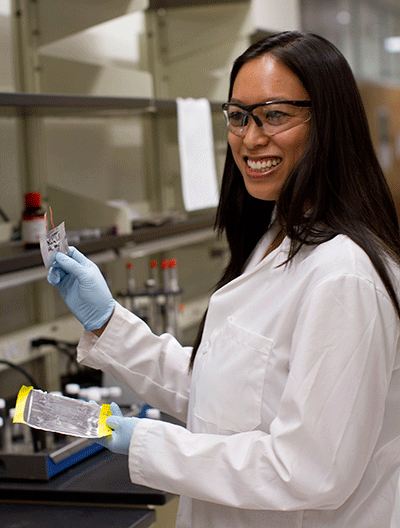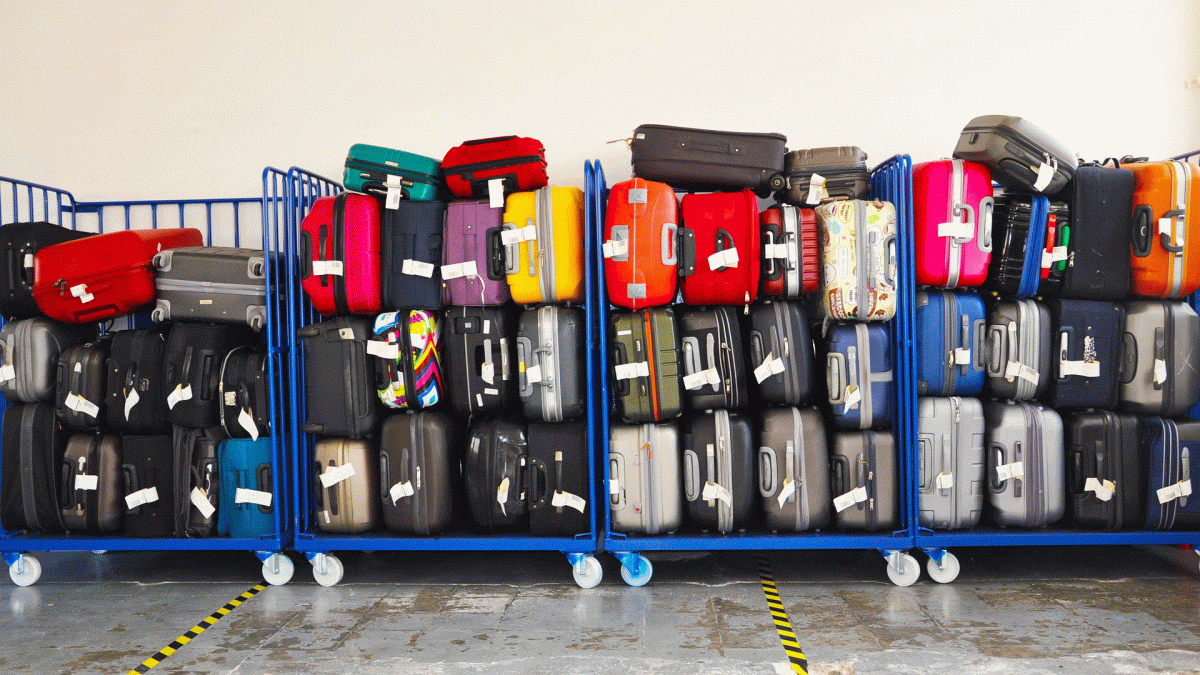As holiday travelers take to the airways, many will face leaving newly gifted “smart luggage” behind unless it qualifies as a carry-on bag.
A growing number of airlines, including American, Southwest and Delta, are requiring that built-in chargers and tracking devices must be removed from all checked bags — and some smart bags do not have removable tech. Effective dates begin between Jan. 1 and Jan. 15.
Today, lithium ion batteries (LIBs) power nearly all of our small, portable electronics. But LIBs have their drawbacks, and despite more than 20 years of research, there are no viable alternatives with the required energy densities on the immediate horizon, according to Candace Chan, an associate professor in Arizona State University’s Ira A. Fulton Schools of Engineering.
Chan, who received a 2016 NSF Career Award to research a ceramic replacement to flammable liquid electrolytes used in current batteries, said the most pressing safety issues are related to short-circuiting — the liquid electrolytes catch on fire and initiate chain reactions, emitting gasses and triggering materials decomposition.
Question: Why are lithium ion batteries so popular?
Answer: LIBs are “energy dense.” They can store a lot of charge in a small space, making them lightweight, portable and ideal for powering personal devices like laptops and cellphones.

ASU engineer Candace Chan received a 2016 NSF Career Award to research a ceramic replacement to flammable liquid electrolytes used in current batteries. Photo by Jessica Hochreiter/ASU
Lithium metal batteries first became commercially available in the 1970s and functioned well as non-rechargeable batteries.
However, attempts to make batteries rechargeable were unsuccessful because of a tendency for growth of small Li filaments, known as dendrites, during charging. The dendrites would short-circuit the batteries and trigger a process known as thermal runaway, which can lead to violent overheating reactions. This drove the technology to rechargeable lithium ion battery versions, which are more resistant to Li dendrite growth. Introduced in the early '90s, these batteries still power today’s smart devices.
In order to extend the battery life between charges and create a smaller, higher-energy battery, today’s LIBs have twice as much active material and thinner separators, setting the stage for a new generation of heat-triggered recalls. In 2006, for example, Sony recalled nearly 6 million lithium ion packs, and last year, Samsung recalled about 1 million of its Galaxy Note 7 phones due to heat-related explosions.
Q: What are the actual risks of an LIB overheating incident?
A: When a LIB overheats, the components inside are at risk of decomposing and undergoing a series of reactions that can generate even more heat and gaseous products. Additionally, the liquid electrolyte that enables Li ions to shuttle between the electrodes is made up of organic chemicals with high volatility and flammability. However, despite high-profile cases of heat-related LIB incidents, the overall failure rate is extremely low, with a probability of incident for mass-produced cells that is estimated at less than one in 10 million cells to 1 in 40 million cells, according to the U.S. Department of Energy’s National Renewable Energy Laboratory.
Q. What are some of the things consumers can do to mitigate the risks of overheating LIB incidents?
A: The most important safety precaution is to make sure devices that use LIBs are not in situations where they will overcharge or overheat. There are many safety mechanisms already incorporated into batteries to prevent inadvertent charging and excessive current. They also can signal abnormal conditions such as pressure increases within the battery or battery temperature exceeding ideal upper or lower limits. However, there are still many good practices that consumers can do to protect their batteries.
- In Arizona, don’t leave a computer in your car — even in the trunk. Always take your devices inside with you. Temperatures inside a parked vehicle can be 50 degrees higher than outside and can exceed 150 degrees in Arizona in the summer. Even if the battery does not reach decomposition reaction temperatures (around 260 degrees), batteries start to degrade and lose charge storage capabilities at about 120 degrees. In other words, exposing your battery to high temperatures will affect your battery’s lifetime.
- Don’t leave your phone plugged in once it’s fully charged.
- Don’t rely on cheap charging cables. When possible, use chargers that are made by the manufacturer specifically for your device. Minimally, make sure your charger is UL-certified.
- Don’t charge your phone or computer while it is inside a backpack or your purse. Make sure you are in a well-ventilated area when using your devices.
- Don’t leave or use your devices where they’re exposed to heat. For instance, don’t leave your cellphone near a radiator or on top of your charging laptop. Don’t take your cellphone into a sauna or steam room.
Q: What should be the focus of battery safety research, and what are you focused on?
A: As we move toward relying more on LIBs for everything from powering electronic devices to electric vehicles, it becomes increasingly important to find alternatives to the rather thermally unstable components in existing batteries while ensuring that the devices maintain the desired electrochemical properties.
Our research involves replacing liquid electrolytes with more stable, solid materials that are engineered to maintain high ionic conductivity so that the Li ions can still travel efficiently between the electrodes. The challenge is that many solid electrolytes can be brittle, so we are exploring composites made of Li-conducting ceramic nanomaterials mixed with polymers toward the goal of obtaining solid electrolytes with good mechanical properties, high Li conductivity, and improved safety characteristics compared to the existing liquid electrolytes.
More Science and technology

ASU-led space telescope is ready to fly
The Star Planet Activity Research CubeSat, or SPARCS, a small space telescope that will monitor the flares and sunspot activity of low-mass stars, has now passed its pre-shipment review by NASA.…

ASU at the heart of the state's revitalized microelectronics industry
A stronger local economy, more reliable technology, and a future where our computers and devices do the impossible: that’s the transformation ASU is driving through its microelectronics research…

Breakthrough copper alloy achieves unprecedented high-temperature performance
A team of researchers from Arizona State University, the U.S. Army Research Laboratory, Lehigh University and Louisiana State University has developed a groundbreaking high-temperature copper alloy…


